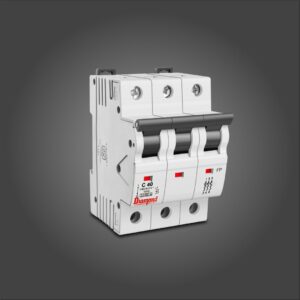Understanding VRMs: A Critical Component in IT Hardware
In the realm of IT hardware, one often overlooked yet crucial component is the Voltage Regulator Module (VRM). VRMs play an essential role in ensuring the stable operation of computer systems by regulating and supplying the appropriate voltage to key components such as the CPU and GPU. Without a reliable VRM, the performance, stability, and longevity of a system could be significantly compromised. This post will dive deep into the importance of VRMs, their role in circuit protection, and how they impact the overall performance of IT hardware.
What is a VRM?
A Voltage Regulator Module (VRM) is an electronic circuit that converts higher voltage from a power supply unit (PSU) to a lower, more stable voltage required by a computer’s central processing unit (CPU) or graphics processing unit (GPU). In essence, VRMs ensure that components within a system receive just the right amount of power. Since both CPUs and GPUs are sensitive to voltage changes, a properly functioning VRM helps to protect these components from electrical damage while ensuring optimal performance.
VRMs are typically found on motherboards, especially near the CPU socket, and on graphics cards. The number and quality of VRMs on these components often determine how well the system can perform, particularly during high-load scenarios such as gaming or video rendering. A robust VRM can support stable overclocking, which can be a significant performance booster for certain users.
How Do VRMs Work?
The function of a VRM is straightforward: it steps down the voltage from a higher source (such as the 12V rail of a power supply) to a lower voltage suitable for the processor. CPUs and GPUs typically require a very low and stable voltage, usually in the range of 1 to 1.5 volts. However, the current drawn by these components is substantial, meaning the VRM must be capable of handling significant amounts of power.
A VRM is usually made up of several key components:
- Pulse Width Modulator (PWM): This component controls the switching of transistors in the VRM.
- MOSFETs: These transistors are responsible for turning the electrical flow on and off in rapid cycles.
- Inductors and Capacitors: These components smooth out the voltage to ensure it remains stable.
The process of regulating voltage involves switching the power on and off at high speeds. The PWM modulates the duty cycle of the switching process, while the MOSFETs control the flow of current. The inductors and capacitors then filter out the high-frequency noise, leaving behind a stable, usable voltage for the CPU or GPU.
The Importance of VRMs in Circuit Protection
In addition to voltage regulation, VRMs also play a crucial role in Circuit Protection. Modern CPUs and GPUs are highly sensitive to voltage fluctuations, and even a small spike or dip in power can lead to system instability, crashes, or even permanent hardware damage. A reliable VRM protects these components by ensuring a steady supply of voltage, even under heavy loads or fluctuating power conditions.
When it comes to circuit protection, VRMs also help to prevent overvoltage and undervoltage scenarios. Overvoltage can occur when too much power is delivered to a component, potentially leading to overheating and component failure. Conversely, undervoltage can cause a component to malfunction or shut down entirely. VRMs act as a safeguard against these conditions by actively adjusting the voltage in real time, ensuring that the system remains stable and secure.
VRMs and IT Hardware Performance
The performance of IT hardware is directly influenced by the quality and configuration of the VRMs. A poor-quality or underpowered VRM can lead to unstable power delivery, resulting in system crashes, thermal throttling, and reduced performance. On the other hand, high-quality VRMs are capable of providing stable power under even the most demanding conditions, such as gaming, video editing, or overclocking.
In particular, enthusiasts and overclockers often pay close attention to the VRM design of a motherboard or graphics card. A robust VRM setup, with high-quality components and an efficient cooling solution, allows for higher and more stable overclocking potential. This is because overclocking increases the power requirements of the CPU or GPU, and the VRM must be able to supply sufficient power without overheating or failing.
When choosing a motherboard or graphics card, it’s essential to consider the quality of the VRM, especially for users who intend to push their systems to the limit. Many high-end motherboards and graphics cards come equipped with advanced VRM cooling solutions, such as heat sinks and even active cooling fans, to ensure that the VRMs remain cool and efficient during operation.
VRM and Efficiency in Modern Technology
With the constant demand for more powerful IT hardware, the efficiency of VRMs has become increasingly important. Modern CPUs and GPUs are designed to consume less power while delivering higher performance, and VRMs play a vital role in achieving this balance. High-efficiency VRMs reduce power wastage in the form of heat, which not only improves system performance but also contributes to energy savings and reduced cooling requirements.
As technology continues to advance, we can expect VRM designs to evolve to meet the demands of next-generation processors and graphics cards. Manufacturers are already incorporating multi-phase VRM designs, which distribute the power load across multiple phases to reduce the stress on individual components. This results in improved efficiency, better thermal management, and higher overall performance.
Conclusion
Voltage Regulator Modules (VRMs) are an indispensable part of modern IT hardware, ensuring that critical components like CPUs and GPUs receive a stable and reliable supply of power. By regulating voltage and providing essential circuit protection, VRMs help to safeguard against electrical damage while enabling systems to perform at their best.
Whether you’re building a high-performance gaming rig, configuring a server, or simply upgrading your desktop PC, the quality of the VRM on your motherboard or graphics card should be a top consideration. A well-designed VRM can make the difference between a system that runs smoothly under pressure and one that struggles with stability issues.
As the demand for more efficient and powerful IT hardware grows, VRM Technology will continue to evolve, offering even greater performance and protection for the next generation of computing devices.













Post Comment